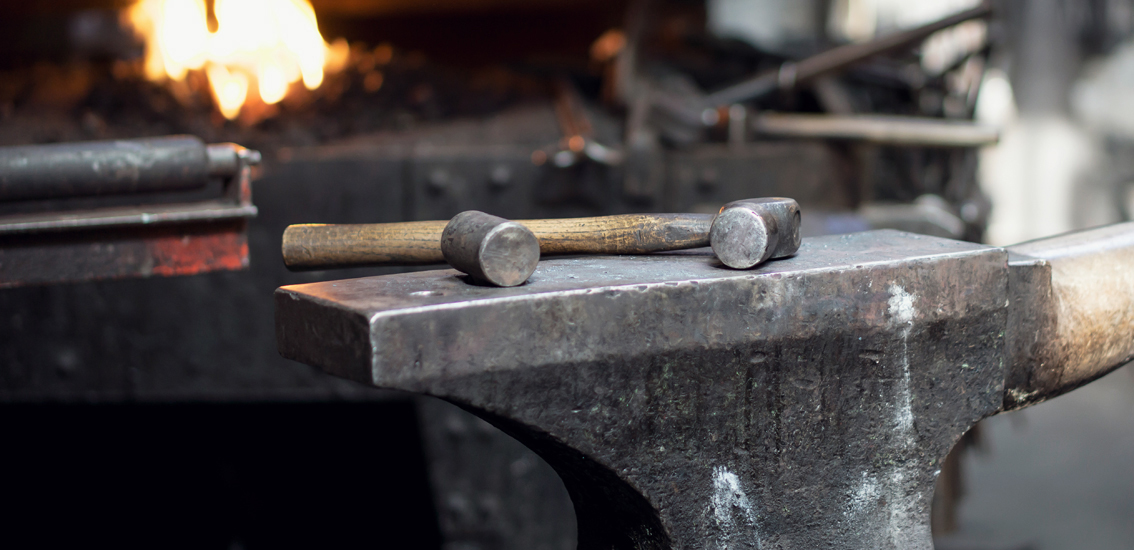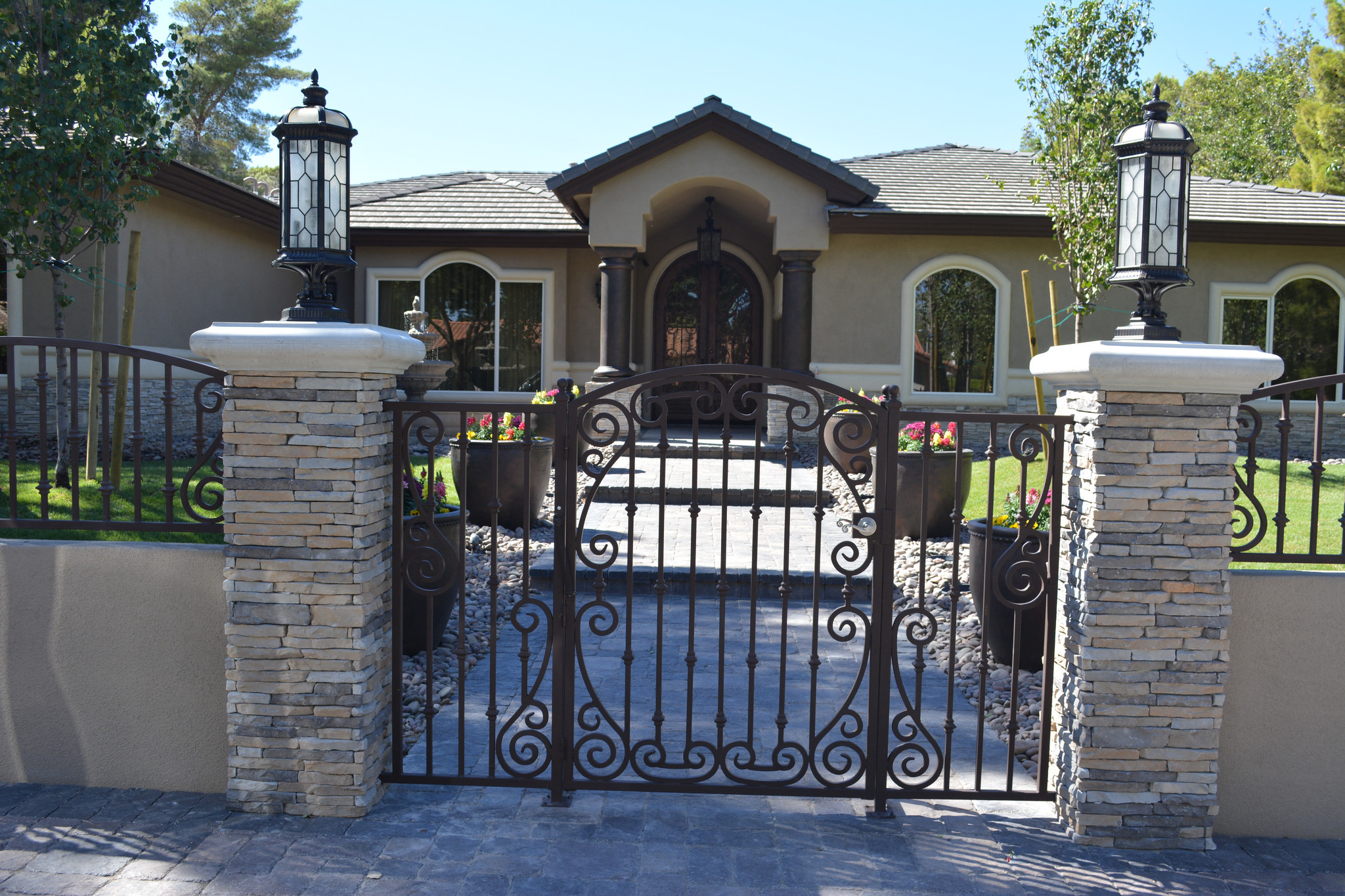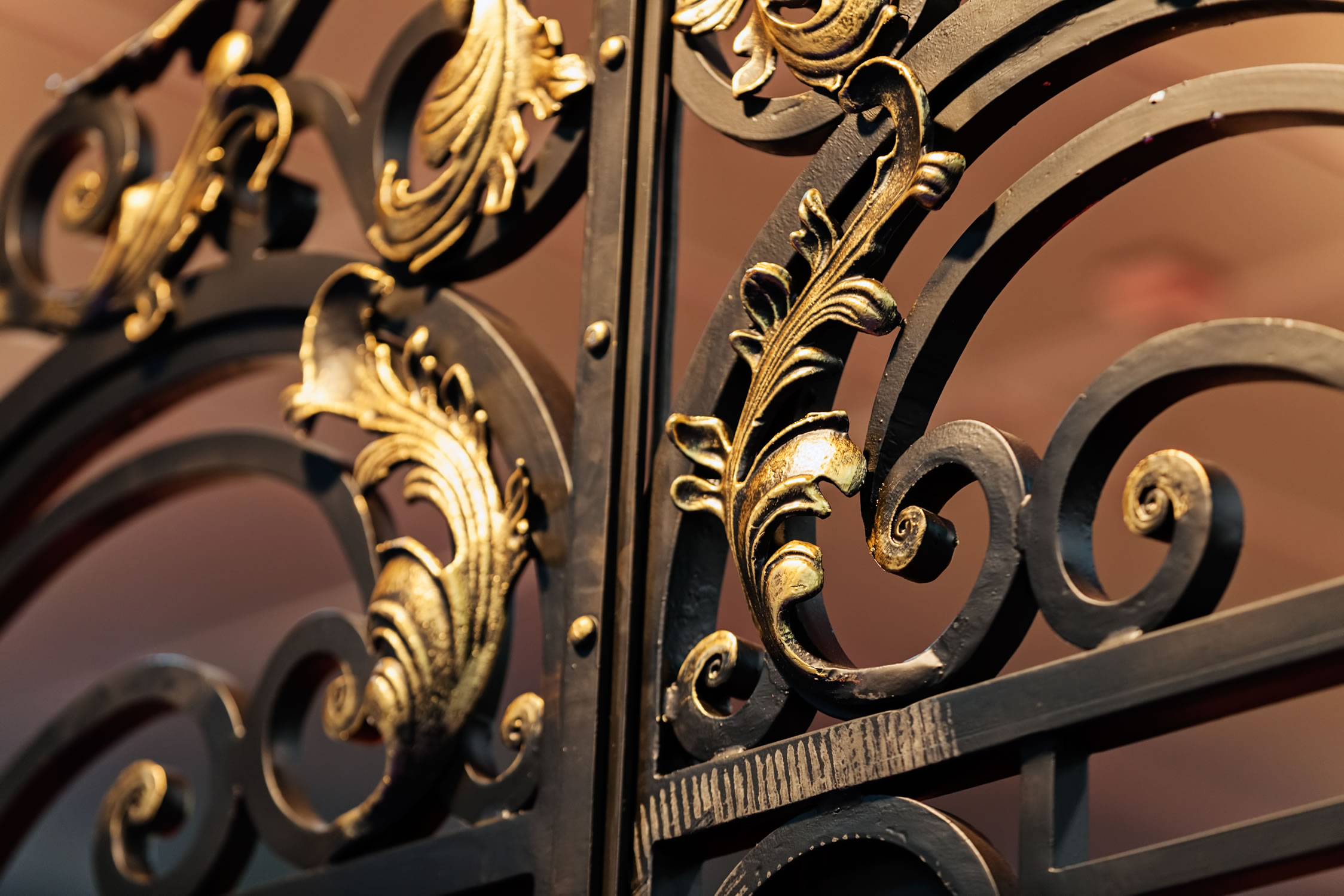
Iron in Art: From the Iron Age to Your Gate
From the Pharaohs in ancient Egypt to the Vedic Kings in India to the Tribes of Israel, the time-honored technique of ferrous metallurgy has influenced both form and function since the late Stone Age. Over eons, expert craftsmen have honed and refined iron artwork to eventually become the ornamental, and functional, gates, trellises, furniture and wall hangings we find in modern homes.
Whether it’s delicate filigree or cast-metal sculptures, the malleable nature and powerful silhouette of metalwork carved a niche in thousands of years of artistic expression. Learn more about the evolution of iron in art and how ornamental ironwork can elevate the aesthetic of your home.
The Origin of Ferrous Metallurgy
Due to their naturally pure state and malleability, gold, silver and copper were likely the first metals that early man used to create artwork, such as awls for graves that communicated the importance of the deceased. These metals are too soft to be truly strong, however, which gave rise to the metal alloy.
Metallurgists of the ancient world worked to combine metals, starting with copper and tin, in an effort to create a metal that’s stronger than the sum of its parts, while also retaining its beauty. This was known as bronze, and thrust humanity out of the Stone Age and into the Bronze Age, during which the ancient Greeks created some of the most beautiful sculptures in history.
After the collapse of the Bronze Age, ancient metallurgists discovered a new technique for working with metal: smelting. Smelting extracts metals from ore, a solid material with metal deposits, through melting. Iron was the first metal to be successfully extracted using a smelting process, which carried ancient man into the Iron Age.
The oldest known iron artifacts weren’t created through smelting, however. They were instead created by cold hammering iron from pieces of meteorite, which happened roughly 2,000 years prior to the start of the Iron Age. That said, it was the smelting of iron ore that led to the advent of steel and other modern metals, which propelled us right into the Industrial Revolution and favored the structural and manufacturing uses of steel and iron over the artistry.
Iron as Art
Prior to the Middle Ages, iron was primarily used for weapons and tools. As the artistic heritage of the Roman Empire and the iconography of the early Christian church mixed with the barbarian artistic culture of Europe, however, ornamental ironwork found its niche as a distinctive decorative element that provided unrivaled strength and security.
Early examples of using iron for dual purposes in medieval architecture are seen in the décor of such regal locations as the Winchester Cathedral, the Canterbury Cathedral and Notre Dame de Paris, as well as on armor from the period. Wrought iron was also used for balconies, banisters and railings, due to its availability and lower cost.
During the 16th century, ornate ironwork became a signature element in the Baroque and Rococo periods, an aesthetic marked by opulence and extravagance. Ironwork became more common in France, which can still be seen in Hampton Court and St. Paul’s Cathedral, before moving into the United Kingdom during the 18th century. Because of the French influence, gorgeous ironwork is prominently featured in New Orleans.
Iron Ore
Of all known metals, iron is the most abundant of all and found in water, soil and rocks. Prized in the ancient times, artwork made from iron ore has been found across the globe, used for decorative effects on garden sculptures, cooking pots, hand tools, ornamental weaponry and drinking vessels.
Iron contains carbon, which impacts its character, strength and malleability. Cast iron has the highest amount of carbon and wrought iron contains the least, and all have different applications.
Because of the carbon content, cast iron has a more brittle quality. It cracks easily and doesn’t bend or stretch as easily as some other types of iron. Though its rough texture makes it unsuitable for most artistic uses, the raw quality of cast iron makes for beautiful fireplace ornamentation and accessories, as well as traditional stoves.
Steel is a mid-point between cast and wrought iron, so it possesses qualities of both. It is light and malleable, as well as having a finer texture. When heated to high temperatures and thrust into cold temperatures, it becomes incredibly strong, making it a good choice for structural works. One of the most notable qualities of steel is its sheen, which is often used in artwork and sculptures.
Stainless steel is made by alloying chromium with steel to prevent rust and help it retain its luster. Because of these qualities, stainless steel is commonly used for everything from fine kitchenware to decorative hardware to staircase railings.
Wrought iron is softer in nature, but contains few carbon impurities. It is the most versatile iron and can be hammered into bars, drawn into wires or rolled into plates, and its malleability allows it to bend and twist into virtually any form. Ornamental uses of wrought iron are seen in braces and brackets, garden sculptures and décor, fireplace linings, railings and balustrades, light fixtures and just about anything else the imagination can dream up.
Ornamental Iron for Your Home’s Aesthetic
From delicate feathers, leaves and flowers to cresting waves and a powerful image of the rising sun, the lasting beauty and powerful image of iron can do wonders for your home’s aesthetic, while also promising security and peace of mind.
Because of the versatility of iron, the design of your gate, railing or outdoor décor can be tailored to your unique vision. Whatever the theme or look you’re going for, iron can provide a rigid, industrial appeal that enhances architectural details, or a free-flowing, whimsical design that juxtaposes the natural elements for an innovative marriage of the organic and engineered.
Whether you’re looking for minimalistic, contemporary chic with simple elements or a rustic-industrial that brings elegance to machinery, few materials offer the possibilities of ironwork.
Enhance Your Home with AR Iron, LLC
If it can be made out of iron, AR Iron, LLC can build it for you. We specialize in ornamental ironwork that beautifully marries form and function, such as wall furnishings, garden trellises and wrought-iron gates, all forged on-site by our talented professionals. Contact us today to learn more about our ornamental ironwork and schedule a consultation!




